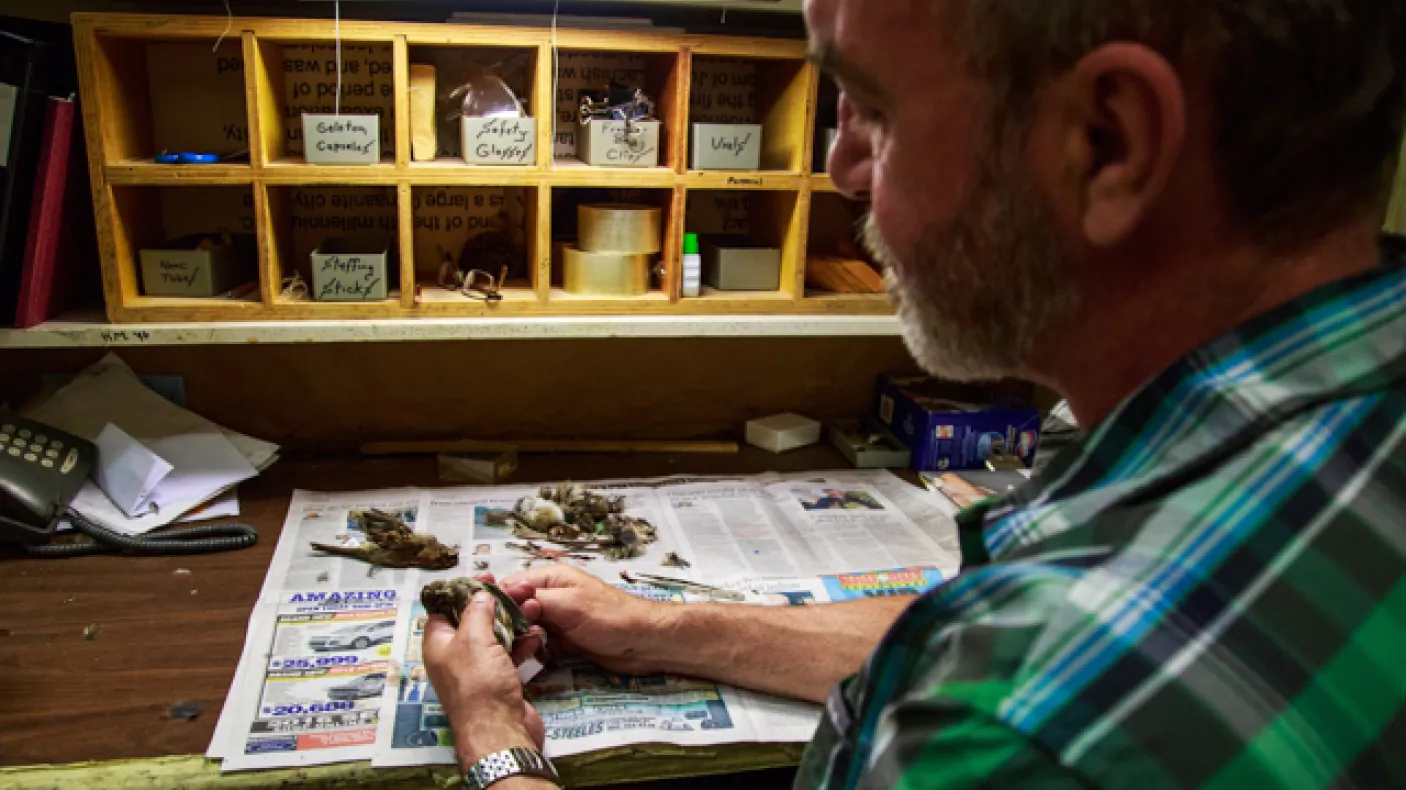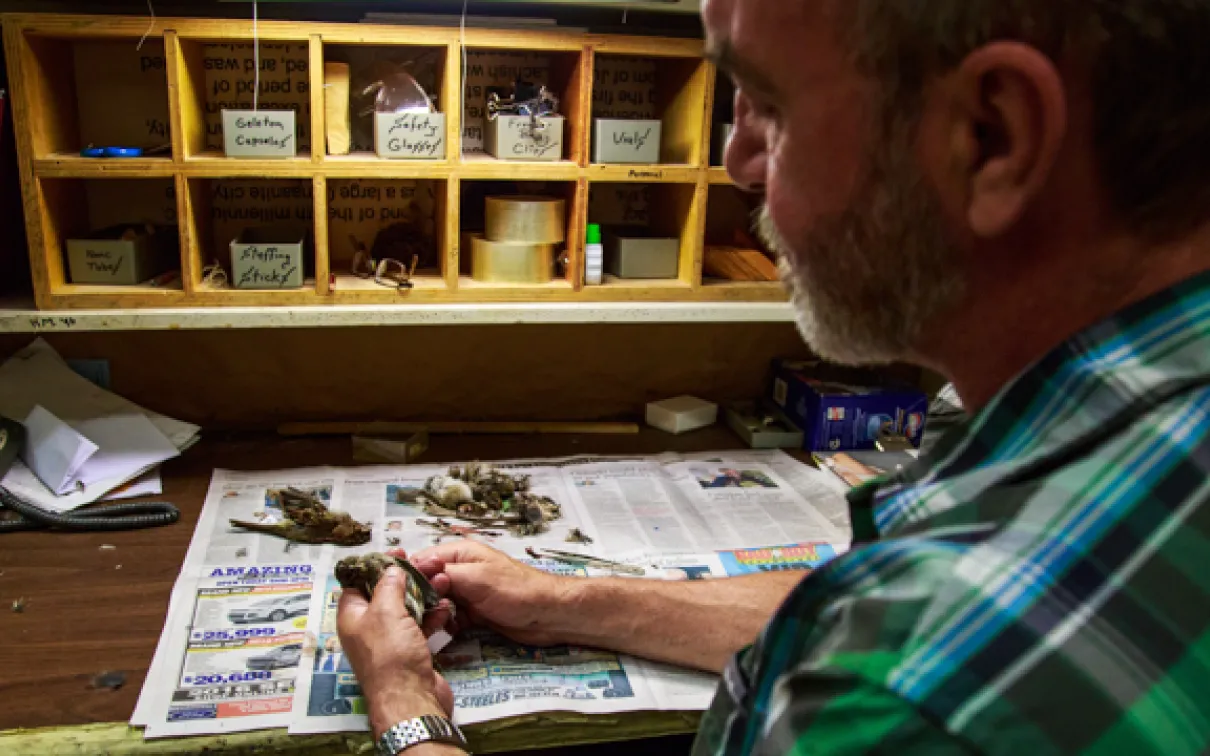Not just for show: how and why museum specimens are collected
Published
Categories
Author
Blog Post
Guest blog by Environmental Visual Communication student Samantha Stephens
I don’t know which is more overpowering - the dense 35oC air, or the peculiar rotting scent - but when I opened the first bolted door, both hit me like a powerful wave. The sign on the second door seemed quite appropriate. “Abandon all hope ye who enter here.” I imagine that, as this quote from Dante’s Inferno indicates, this might be what hell feels like. As this last barrier swings open and the dim room is revealed, the swarm of hundreds of tiny creatures moving across the concrete floor completes that vision. However, for some of the ROM’s tireless workers, this environment is heaven. Here resides the dermestid beetle colony. These ravenous beetles are eagerly seeking their next meal. Manoeuvring themselves into the crevices of skeletons, they strip the flesh from delicate specimens with more precision and speed than the nimblest of human fingers.
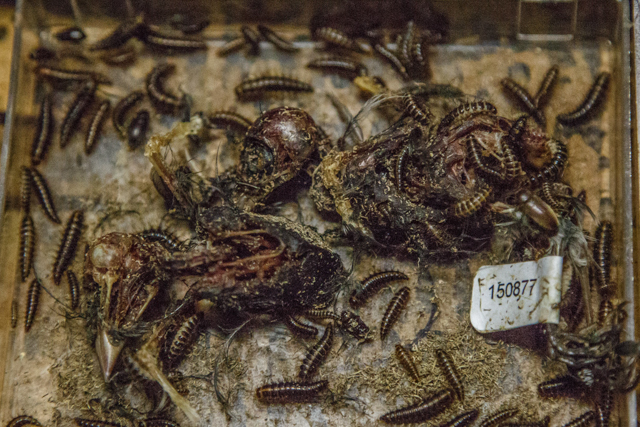
The journey to the Bug Room is just one step in the curatorial process. Some specimens are destined to become study skins, keeping their fur and body shape intact, and so they bypass this cleaning step, and are instead usually processed at the site of collection, such as the big brown bat Burton Lim collected at this year’s Ontario BioBlitz. Jacqueline Miller, another member of the mammalogy curatorial team, explained that the majority of collection specimens are acquired by ROM curators on field excursions. The ROM’s mammalogy specialities are bats and mice, which together make up the bulk of mammal diversity. Other specimens, especially those that are larger, come from zoos, like the southern white rhino that greets visitors entering the Life in Crisis: Schad Gallery of Biodiversity. Sometimes specimens even come from the public and can be included in the collection if they are accompanied by precise information; otherwise they are used in the teaching collection.
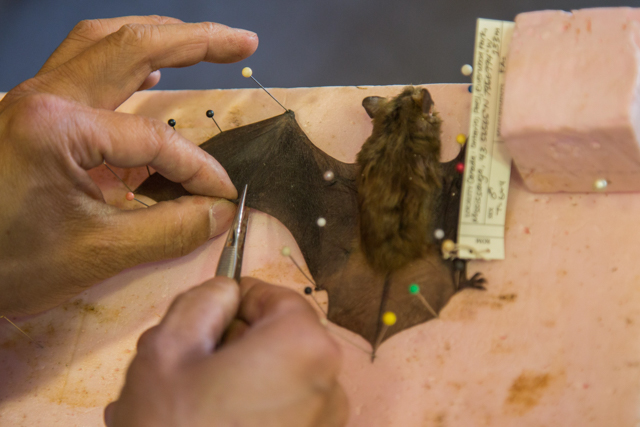
From an Etruscan shrew weighing in at just 2 grams to one of the ROM’s most recent acquisitions, a blue whale tipping the scale at almost 200 tonnes, processing the specimens for the mammalogy collection requires a range of skills from articulating one of the smallest of skeletons, to being the first to plasticize the largest of hearts. This effort isn’t all just for show though. Of the museum’s thousands of specimens, only a fraction is on display for the public to see. Biological collections represent biodiversity at a particular place and time. These voucher specimens are indispensable. They are used as a reference for answering questions of how species’ populations have changed over time. Considering today’s rapidly changing ecosystems, understanding how wildlife populations are responding is crucial for informing conservations efforts. Adding the data that accompanies each new specimen to online databases means researchers from all over the world can easily utilize the ROM’s data to help answer these questions.
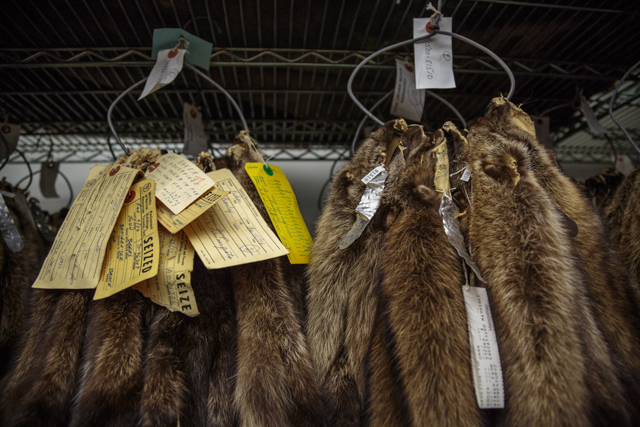
As I watch Brad Millen, a database and preparations technician, prepare bird specimens, I think about the incredible foresight that early naturalists had when they started collecting and preserving specimens, knowing that this natural historical record would be indispensable. Brad finishes de-feathering and gutting the sparrows, which were already deceased when they were collected and donated by the Fatal Light Awareness Program (FLAP). FLAP volunteers collect the birds that died in collisions with buildings during their early morning sweep of the streets of Toronto. These birds become a meal to keep the dermestid colony ready for their next job. I hope that these collections will not become a record of the biodiversity that we are losing, but instead serve as one of tools that provided the knowledge to allow us to effectively conserve Earth’s biodiversity.
